Differential Responses to Aging Among the Transcriptome and Proteome of Mesenchymal Progenitor Populations
- PMID: 38837176
- PMCID: PMC11369222
- DOI: 10.1093/gerona/glae147
Differential Responses to Aging Among the Transcriptome and Proteome of Mesenchymal Progenitor Populations
Abstract
The biological aging of stem cells (exhaustion) is proposed to contribute to the development of a variety of age-related conditions. Despite this, little is understood about the specific mechanisms which drive this process. In this study, we assess the transcriptomic and proteomic changes in 3 different populations of mesenchymal progenitor cells from older (50-70 years) and younger (20-40 years) individuals to uncover potential mechanisms driving stem cell exhaustion in mesenchymal tissues. To do this, we harvested primary bone marrow mesenchymal stem and progenitor cells (MPCs), circulating osteoprogenitors (COP), and adipose-derived stem cells (ADSCs) from younger and older donors, with an equal number of samples from men and women. These samples underwent RNA sequencing and label-free proteomic analysis, comparing the younger samples to the older ones. There was a distinct transcriptomic phenotype in the analysis of pooled older stem cells, suggestive of suppressed proliferation and differentiation; however, these changes were not reflected in the proteome of the cells. Analyzed independently, older MPCs had a distinct phenotype in both the transcriptome and proteome consistent with altered differentiation and proliferation with a proinflammatory immune shift in older adults. COP cells showed a transcriptomic shift to proinflammatory signaling but no consistent proteomic phenotype. Similarly, ADSCs displayed transcriptomic shifts in physiologies associated with cell migration, adherence, and immune activation but no proteomic change with age. These results show that there are underlying transcriptomic changes with stem cell aging that may contribute to a decline in tissue regeneration. However, the proteome of the cells was inconsistently regulated.
Keywords: Adipose-derived stem cells; Circulating osteoprogenitors; Geroscience; Mesenchymal stem cells; Stem cells.
© The Author(s) 2024. Published by Oxford University Press on behalf of The Gerontological Society of America.
Conflict of interest statement
None.
Figures
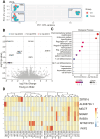
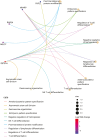
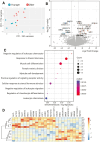
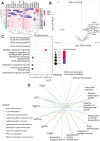
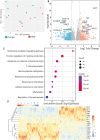
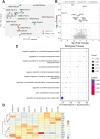
Update of
-
Differential responses to aging amongst the transcriptome and proteome of mesenchymal progenitor populations.Res Sq [Preprint]. 2023 Dec 15:rs.3.rs-3755129. doi: 10.21203/rs.3.rs-3755129/v1. Res Sq. 2023. Update in: J Gerontol A Biol Sci Med Sci. 2024 Sep 1;79(9):glae147. doi: 10.1093/gerona/glae147. PMID: 38168272 Free PMC article. Updated. Preprint.
Similar articles
-
Differential responses to aging amongst the transcriptome and proteome of mesenchymal progenitor populations.Res Sq [Preprint]. 2023 Dec 15:rs.3.rs-3755129. doi: 10.21203/rs.3.rs-3755129/v1. Res Sq. 2023. Update in: J Gerontol A Biol Sci Med Sci. 2024 Sep 1;79(9):glae147. doi: 10.1093/gerona/glae147. PMID: 38168272 Free PMC article. Updated. Preprint.
-
Effectiveness and safety of vitamin D in relation to bone health.Evid Rep Technol Assess (Full Rep). 2007 Aug;(158):1-235. Evid Rep Technol Assess (Full Rep). 2007. PMID: 18088161 Free PMC article.
-
Drugs for preventing postoperative nausea and vomiting in adults after general anaesthesia: a network meta-analysis.Cochrane Database Syst Rev. 2020 Oct 19;10(10):CD012859. doi: 10.1002/14651858.CD012859.pub2. Cochrane Database Syst Rev. 2020. PMID: 33075160 Free PMC article.
-
Inhaled mannitol for cystic fibrosis.Cochrane Database Syst Rev. 2018 Feb 9;2(2):CD008649. doi: 10.1002/14651858.CD008649.pub3. Cochrane Database Syst Rev. 2018. Update in: Cochrane Database Syst Rev. 2020 May 1;5:CD008649. doi: 10.1002/14651858.CD008649.pub4. PMID: 29424930 Free PMC article. Updated.
-
Nutritional supplementation for hip fracture aftercare in older people.Cochrane Database Syst Rev. 2016 Nov 30;11(11):CD001880. doi: 10.1002/14651858.CD001880.pub6. Cochrane Database Syst Rev. 2016. PMID: 27898998 Free PMC article.
References
Publication types
MeSH terms
Substances
Grants and funding
LinkOut - more resources
Full Text Sources
Medical

